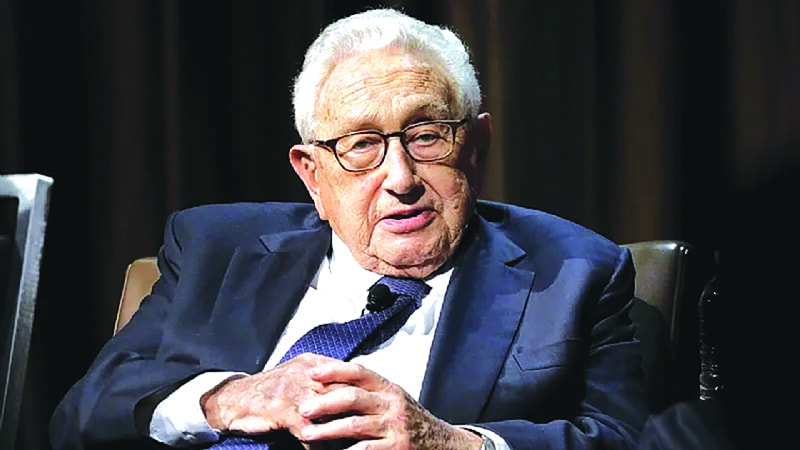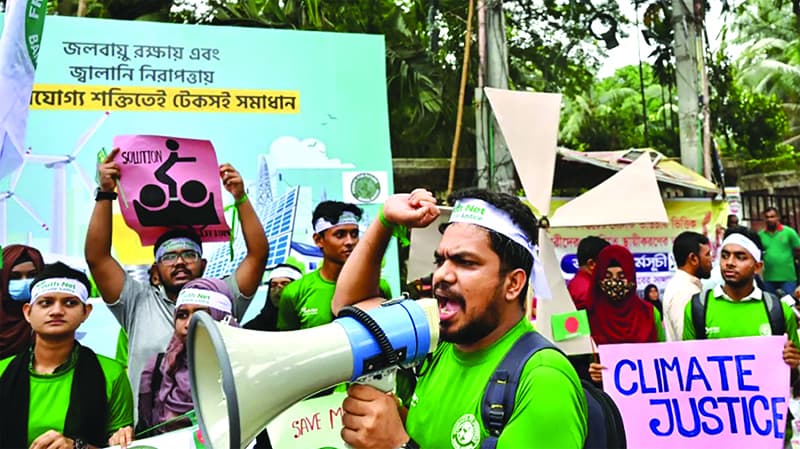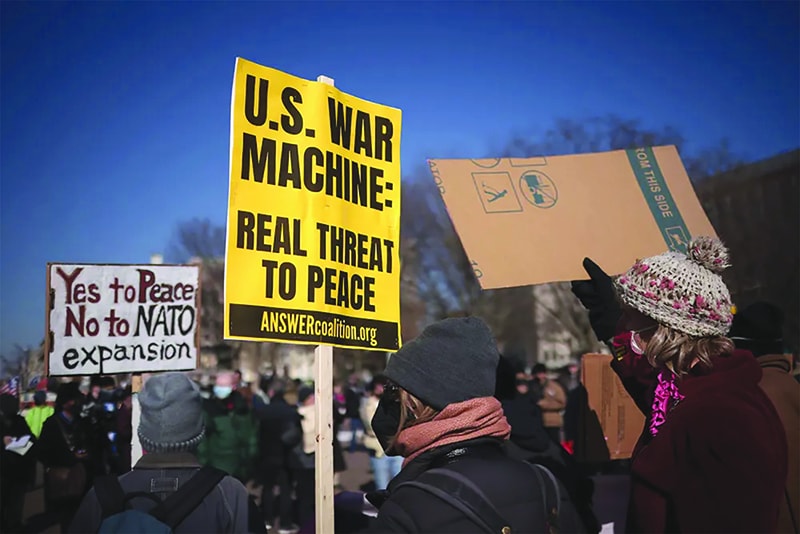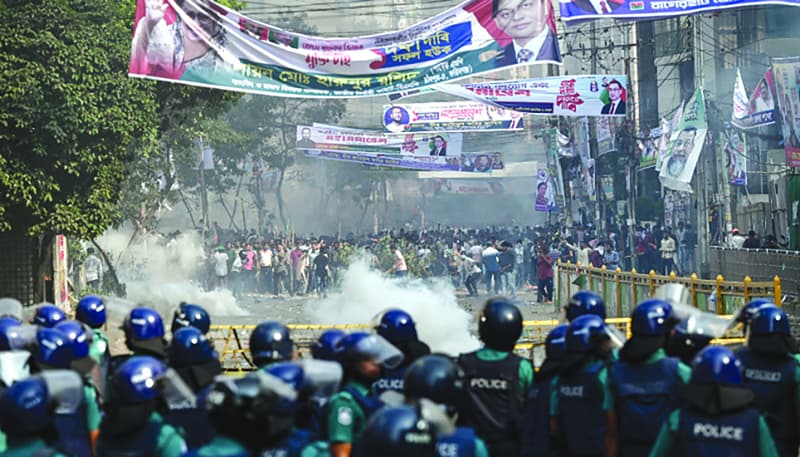Political Economy of Reinventing Bangladesh Railway

Dr. Jamaluddin Ahmed
Part-III
6.2.2 Maglev…..
A detailed discussion on Maglev is not within the scope of this article; however, for the sake of basic appreciation, it is to be understood that Maglev trains essentially float on a cushion of air at very high speed; it moves between two electromagnetic fields, without physically touching the rail track and doesn’t use any fossil fuel to run. Since Maglev train does not carry engines and the equipment’s such as transformers, inverters and wheels thus make light weight and hence no adhesion or friction problems. In addition, superconducting magnets makes it capable of harnessing large propulsive power. Images of Maglev trains are given in Fig 2.2. Maglev technology has received the most attention, particularly in North America, as a result of its ability to greatly reduce its environmental impact on surrounding communities. Germany and Japan are the pioneer nations in utilizing Maglev technology. Japan has developed the High Speed Surface Transport (HSST), while Germany has developed the Transrapid system. Recently, Japan has been promoting a newer version of the Maglev known as the super conducting Maglev technology.
6.2.3 Riding Comfort and Tilting Technology…
The tilting technology has now become a requirement for high speed operation. When the train travels at high speed curved tracks, particularly on existing railroad tracks, the coach senses the curves and tilts itself suitably to nullify the effect of centrifugal force. The advantage of tilting trains is that they can negotiate curves faster than ordinary trains, thus reducing the level of discomfort that passengers normally experience otherwise. At the same time, this method reduces the track forces which in turn improves the vehicle stability at high speeds on curved tracks. Switzerland and Great Britain are the latest among the European countries to introduce tilting train technology. In 1996, Germany introduced its latest ICE2 (Inter City express-2) trains as tilting trains, which could travel at an average speed of 235 km/h. Some other countries that employ tilting trains are Sweden, Norway, Japan, Italy, Finland, Portugal, Slovenia, Australia and the USA.
6.2.4 Comparison of Magnetic Levitation with High speed trains employing rail-wheel friction technology……
As discussed above, high speed operation is possible by adopting either Maglev technology or standard rail-wheel friction technology, the relative cost becoming the predominant deciding factor. Maglev guide paths are bound to be more costly than conventional steel railways and hence needed specific magnetic track infrastructure, which is the major challenge in the implementation of Maglev. Bangladesh needs to indigenously develop passenger carriages capable of safely operating at peak commercial speeds of 350 km/h and test speeds of above 400 km/h. This feat has been achieved by many countries earlier, the latest being China. This will entail development of various associated products and technologies which would include but not limited to; Capability of simulation and model studies, High speed test tracks of considerable length and ability to simulate various conditions. Capability to design and simulate high speed bogies and test the prototypes in test tracks especially from the point of view of track forces, vibration and derailment coefficient. Suspension technology for high speed, bringing in passenger comfort within acceptable levels. Technologies similar to tilting technology for increased passenger comfort and for reducing accidents. Lighter and stronger composite materials similar to the one needed for aircrafts. Acoustic design and noise reduction technologies. Design to take care of crash and impact and test for crashworthiness, Capability to design and develop aerodynamic designs. Brake systems suitable for high speed. Inter-vehicular couplers (mechanical, pneumatic, power and signalling), High reliability door closing mechanisms. Platform surveillance system. Illumination, heating, ventilation and air-conditioning systems with highest energy efficiency with a possibility to use solar power and/or regenerated power from the locomotive. Fire retardant and fire resistant materials, Environment friendly bio-toilets etc.
Comparison of MAGLEV with High-Speed Train Technology
6.3.0 Locomotive Design……….
At high-speed operation, due to vintage, loss becoming more predominant, the power requirement of locomotive becomes enormous. Very high power locomotives need to be developed with most energy efficient propulsion systems. Currently, Bangladesh Railways manufactures 4.5 MW locomotives. The propulsion system is 3-phase drive using asynchronous motors, employing either GTOs or IGBT technology. Most of the technologies used currently are adopted or adapted from European designs through technology transfer, license production or direct sale. In order to make it viable and maintainable, indigenous development is a must. Even though developed countries like Europe, Japan and China also during the recent years, are operating railways at high speed, has made rapid strides in developing propulsion systems for both synchronous and asynchronous drives through a series of evolution using thyristor, GTOs and IGBTs. Such an event is yet to star t in India. Going by the statistics of research papers in power electronics published in international forums like IEEE, Indians may top the list, but yet, the propulsion system development in Bangladesh has not really happened. This is a very high value and critical component in motive power and needs to be developed indigenously. Very recently, an Indian Company has succeeded in developing IGBT based propulsion drives of 4.5MW capacity, which is being used in commercial operation. This is a silver lining, and creates confidence that capability exists in India. However commercialization of those advanced technologies can be possible through synergetic partnership between Academia, R&D institutes, Government as well as industry. Bangladesh has the knowledge base and wherewithal to do it, only the right agencies are to be brought together and strategized. The technology that would be needed in the next two decades for entering into high speed operation (but not limited to).
6.3.1 Heavy and Long Freight Train Operation……
Some of the methods used for higher throughput of freight in railways include running longer and/or heavier trains, having dedicated freight corridors, and increasing the average speed of freight trains, and improving wagon turn-round at terminals, etc. Countries like Australia, USA, China and South Africa use heavy haul, by use of distributed power, for phenomenally increasing the throughput with minimal infrastructural inputs and modifications in the wagons. Distributed power operation amounts to attaching many trains one after the other and all controlled by a master locomotive having a single crew. The locomotives distributed across the trains, are controlled by the master through a radio link or a wired data connection. The long trains so formed are run under one signal path. It shows the maximum freight load carried by a single distributed power train in certain countries using this technology. On the contrary, Indian Railways predominantly operate trains with 58-wagon length, having train load of around 5000 tonne. In the recent past, it has started operating two trains together to increase the load up to 118 wagons, by using voice controls between drivers of the two connected trains. Indian Railways aims to achieve heavy haul with 200 wagons train with 32,000 tonne load, to be run with Radio Remote Control Equipment being developed indigenously. The technology gap is clearly visible.
6.3.2 AXLE Load…..
The axle load of a wheeled vehicle is the fraction of total vehicle weight resting on a given axle. Axle load is an important design consideration in the engineering of railways, as exceeding the maximum rated axle load will cause damage to the tracks. A given section of track is designed for a prescribed maximum axle load. The maximum axle load is related to the strength of the track, which is determined by weight of rails, density of sleepers and fixtures, train speeds, amount of ballast, and strength of bridges. Because track and especially the rails are expensive, it is desirable to optimise the track for a given axle load. If the track is overloaded by trains that are too heavy, it can be damaged in a short time. Increasing the axle load means increasing the load carrying capacity of the wagons. At the same time, it further stresses the track. This demands enhanced design features, which adds to input cost. Hence, compromise is sought for an optimum axle load. Many developed railways have adopted axle loads that are much higher than the axle load limits used in Indian railways. Increased axle load directly increases the throughput, as can be seen from Table 2.3. For the same length of trains (58 wagons), the throughput increases considerably. Table 2.4 shows the axle loads prevailing in some of the highly developed freight operating railways. In contrast, Bangladesh Railways operate at an axle load of 20.5 tonne. Efforts are being made now to increase the axle load to 22.9 tonne and later to 30 tonne in the dedicated freight corridor. Even after achieving this, there is still a gap when compared with countries like the USA and South Africa.
6.3.3 Payload to TARE Weight Ratio of Wagons…..
Tare is the weight of an empty wagon, whereas, payload is the actual useful material that can be carried in the wagon. Tare and payload adds to make gross loads. Once the maximum axle load for a particular railway is fixed, the gross weight also gets fixed. In order to have more productivity from a wagon, higher payload to tare ratio is needed. This is possible by reducing the tare weight, which can be achieved by using lighter wagons by way of using suitable materials for construction. Bangladesh Railways use many types of wagons, in which the ratio varies from 0.9 up to 2.6 (2.6 in case of BOXN type).The material used for construction is steel, which adds to the tare weight. Bangladesh Railways have taken up development of lighter wagons to achieve payload to tare weight ratio of 3.4 by using stainless steel. By using aluminum and other composites, it can be further improved. In contrast, the payload to tare ratio prevalent in the US railroad and Western Railroads are in between 3.5 to 4.5. While Indian Railways carry about 450 kg of dead weight for every 1,000 kg freight, the dead weight in the US does not exceed 170 kg. European Railways have already initiated an Innovative Rail Freight Wagon Design 2030 programme to develop state-of-the art technology in freight carriers.
6.3.4 Electronically Controlled Pneumatic Brakes (ECBP) in Wagons……
Traditionally, brakes are applied from wagon to wagon along the train in a sequential manner. On a 150-wagon freight train, this could take up to two minutes between operation of the control valve on the leading locomotive and the application of brakes on the last wagon. In contrast, ECP braking uses electronic controls, which make it possible to activate air-powered brakes on all the wagons throughout the train at the same time. Applying the brakes uniformly and instantaneously in this way gives better train control, shortens the stopping distance, and leads to a lower risk of derailment or of coupling breakage. The ECPB can also apply the brakes on the rearmost wagons, slightly before the brakes on the front wagons are applied, which reduces the shock and noise of the wagons bunching up. The ECP brake control system consists of locomotive equipment, wagon braking equipment, an ECP End-of-Train device, and a power and communications distribution system. The locomotive equipment, referred to as the Head-End-Unit (HEU), consists of a train-line communications controller, train-line power supply and an identification module. The wagon equipment consists of the car control device, vent valve, wagon identification module and junction boxes. Train-line cable and connectors are provided on both the wagon and locomotive. The South African Transnet Coal-line was the first major heavy-haul operator in the world to apply ECP/WDP (wired distributed power) brake technology as opposed to RDP (radio distributed power) to its entire fleet. ECPB in wagons is a very effective way of improving the throughput of a train by way of fast braking and release times. This is similar to the pneumatic braking presently used in the Electrical Multiple Units. Indian Railways may like to pursue the ECPB technology.
Intelligent Adhesion Control System in Locomotives, In rail vehicles, the torque of the motorised rotating wheel is translated to linear force and transmitted to the locomotive through friction (normally known as adhesion) between the propelling wheel and the rail, and the maximum value is limited by the coefficient of adhesion, which is a physical phenomenon. Hence, even though the locomotive may be very powerful, it is not necessary that it can provide enough pull to the train, unless coefficient of adhesion is favourable.
On the other hand, coefficient of adhesion varies widely depending upon the track and environmental conditions. A dry rail offers a better adhesion, whereas, a wet and greasy rail offers low adhesion values. If the adhesion is poor but the locomotive generates more tractive effort, which cannot be sustained through friction, the remaining effort goes for accelerating the wheel, known as wheel slip. The coefficient of adhesion is the ratio of tractive effort at which the wheel slip occurs to the dead weight of the locomotive. The maximum force that can be transmitted to the trailing stock – T = μ*W, where μ is the coefficient of adhesion and W is the deadweight of the locomotive.
Due to axle load considerations, the weight of the locomotive cannot be increased beyond a point. Hence, in order to derive maximum tractive force, adhesion realised must be improved. For this purpose, an intelligent adhesion control system is needed, which monitors the wheel slip conditions and interacts continuously with locomotive propulsion control system and optimise the power to derive maximum adhesion at any given point of time. Some developed railways have implemented fuzzy algorithms and radar based sensing for achieving this. Many modern locomotives presently used by Indian Railways have some level of adhesion control system, but there is room for fur ther improvement.
6.3.5 Signaling and Traffic Management System…
For safe and efficient running of trains at high speed and maintaining the scheduled time, signalling, communications and control play avital role. Europe, in coordination with UIC– the International Union of Railways–was the pioneer in evolving a standard for signalling, train operation and control requirements, termed as ETCS (European Train Control System).It defines various standards and interfaces of track, rolling stock, signalling and communication equipment, which has to work in an integrated way. The ETCS has also evolved over the years and different levels have come over a period of time. With the introduction of vehicle to way side communication over a dedicated frequency band GSM-R, the entire system has been integrated and is known as ERTMS (European Traffic Management System), which essentially is a combination of ETCS Level 3 and GSM-R. The latest prevailing ETCS Level 3 is a radio based train control system (communication based train control). Europe leads in implementation of the ERTMS, while in Asia, China, Taiwan and South Korea lead in making new contracts for implementation. Indian Railways are yet to implement, but only some subtle move has started. ERTMS needs both trackside and on-board implementation and it tremendously improves throughput and enhances safety considerably.
6.3.6 Passenger Comport
For increasing the riding comfort, some developed railways use tilting technology for high-speed trains. The passenger carriages used in Indian Railways do not offer good riding comfort at high speeds and needs changes in design. Special Wagons, Present portfolio of wagons does not cover the requirement of all types of commodities transported at present. Such special wagons need to be developed. Double Stacked Container, Container service, per se, is an intermodal transport, as it can be transported by road, rail, sea etc. Use of double stack containers in rail transport just doubles the carrying capacity. Indian railways should develop wagons suitable for carrying double stack containers. As a corollary to this, the tracks also need to be augmented for higher axle load of 30 tonne to 35 tonne. Wagons for refrigerated goods. At present, Indian Railways have a fleet of 10 refrigerated parcel vans, which are attached to long distance mail/express trains as per demand. About 98 insulated-ventilated containers are running on Indian Railways as special trains as per demand. More Wagons suitable for carrying refrigerated goods need to be developed. This will enable transport of perishables from one part of the country to another part without any damage. Moreover, preferential transport of perishable goods is also required much attention.
6.3.7 Bridging the Gap
Many of the challenges in future are expected to be tackled through appropriate technological inputs in various spheres. Before we really think about what we would do in the next 20 years, it is worth auditing the present Indian scenario with that of the developed world. Even today, there is considerable gap between India and the ‘Best in the World’. In the next 20 years, it is quite natural that many new technologies will evolve which would change things that we see today. In order to catch up with this race, we literally have to leap forward. Railway technology is not so restricted unlike defence or space technology, and the same can be bought at a cost. A technology partnership with ‘Best in the World’ in each sphere of activity is possible. Indian Railways is moving in this direction and with Indian economy opening up, this is quite achievable. Indian industries could not come any closer to the leaders in the railway technology in developed countries, may it be high speed, propulsion system or signalling, and there are reasons as well, which may be answered in subsequent sections.
7.0 Status of Technology and Availability of Resources
7.1 Technologies under consideration….
The areas considered for discussion with regards to the status and availability of technology, include, High Speed Operation, Heavy Haul, Signalling and Traffic Management System, Safety-related, Security-related, and Passenger Comfort-related. Technologies related to High Speed Operation, High-speed operation will need development of many associated technologies, some of which along with availability of resources. High-speed operation is a technology well proven in Europe and in countries like China and Japan.
It involves development of a large number of associated technologies, which can be purchased from proven sources. However, they could be prohibitively costly and may not be sustainable in the long run for maintenance. Initial import followed by indigenous development for long term sustenance, like the strategy adopted by China, is advisable. Technologies related to Freight Operation, Heavy haul is considered to be one of the most efficient methods of increasing freight throughput, if proper technology is applied. Under this, many technology areas need to developed, including, wagons with higher payload to tare ratio, use of higher axle load, use of long trains with radio controlled distributed power (RDP), use of long trains with wired distributed power (WDP) and IT enabled freight operations management service with end-to-end wagon tracking system.
7.2 Technologies related to Signalling and Traffic Management System….
The type of signalling and traffic management affects the overall efficiency and safety of operation. European railways were the pioneers in evolving a standard for automation in this area–ETCS (European Train Control System) – which involves provisioning in both trackside and on-board the vehicle. Depending upon this provisioning and safety levels, there evolved ETCS levels 0, 1, 2 and 3. ETCS level 3, together with GSM-R evolves ERTMS, which also has levels 1, 2 and 3 depending upon the nature of track to vehicle communication. ERTMS is now a proven technology and would be needed in the future for Indian Railways to achieve the planned objectives. This is complex, involves multi-disciplinary technologies, and needs huge investments. Developing totally indigenous systems would take enormous time, but to sustain in the future, possession of this technology with Indian industries (even with foreign tie-ups) would be essential. To begin with, this technology needs to be bought from proven sources with a phased plan for indigenisation.
7.3 Technologies related to safety….
Coaches with better crash worthiness, Design of coaches with better crash worthiness, which is an area that would need outside support, at least in the form of consultancy. Accidents at level crossings, Highest numbers of fatalities over IR occur due to accidents at unmanned level crossings. In ERTMS (The European Railway Traffic management) territories, interlocking of level crossing would be taken care of as part of the basic requirement. However, many level crossings, due to its low traffic (train vehicle units), are not financially justified. Alternative technologies must be developed in such cases to avert accidents. This can very well be achieved indigenously with available resources. Accidents due to extremism and vandalism, this is a requirement which is very difficult to implement. Suitable technology must be evolved to detect suspicious movements and extremist activities on the track. On the rolling stock side also, suitable surveillance mechanism must evolve to detect carrying of explosives and banned items. This could possibly be developed indigenously with available resources. Accidents due to fire, better designs to avoid fire and also detection and extinguishing technologies must be evolved.
7.4 Technologies related to security….
A better surveillance and vigil mechanism is needed to curb crimes in moving trains and station areas. Technological tools like the following should be considered: (i) Development of on-board CCTV surveillance: real-time monitoring is possible by a police squad in a nominated area in every train, for instance in the guard’s van. In such a case, there is no need for police to patrol the entire train in case of vestibule trains; (ii) Development of systems that can be enabled by passengers in case of any security issues like terrorism and banditry attacks. These systems can take a snapshot and send to the on-board police control room for quick action; (iii) New station designs for better surveillance; (iv) New station designs for evacuation of public in the event of disasters caused by terrorists; (v) New yard designs, which prevent access to unauthorised persons and/or facilitate remote monitoring and policing; (vi) Systems (intended for installation at railway stations) for detection of explosives, inflammables, etc; (vii) Ability of railway coaches to detect the on- board presence of explosives, inflammables, etc; (viii) Ability of rolling stock to detect if explosives are planted on tracks or if damage has been inflicted to track by terrorists and transmit warning message to control centres; (ix) Ability of railway infrastructure/ inspection cars/ trains to effectively detect and issue advance warning if explosives are planted on tracks or if damage has been inflicted to track by terrorists; (x) Coach design should facilitate efficient evacuation of passengers in event of an explosion/ disaster; (xi) Securing transportation of strategic importance e.g. defence supplies, emergency relief consignments, etc. from terrorist strikes; (xii) Efficient system for security scanning of freight being received/ booked for movement; (xiii) Systems for detecting suspicious activities in yards (i.e. planting of explosives on coaches, wagons, etc.); and (xiv) Tamper-proof design of critical railway systems (e.g. rolling stock, signalling, relays, SCADA, etc.) All the above aspects can be indigenously developed using available resources.
Technologies related to passenger comfort…..
Riding comfort and tilting technology riding comfort is of paramount importance at high speeds. Passengers experience heavy force or jerks at curves due to centrifugal force, which can be eliminated if the cant (elevation) is adjusted suitably. Tilting train technology can enhance passenger comfort through sensing the curves and tilts itself suitably to nullify the effect of centrifugal force. The Pendalino train of Italy uses the tilting technology. In case this technology is patented, the same can be purchased and used in India. An alternative strategy also can be explored.
Wash Room and other facilities……
There has not been any improvement in the design of toilets in trains. Efforts were made in the past with some type of bio-friendly toilets and collect-and-discharge type toilets. This environment friendly, low cost and robust technology, jointly owned by IR and DRDO, is the first of its kind in Railway Systems in the world. However because of the nature of traffic, duration and type of logistics used are quite different in railway than in aircrafts, a suitable technology needs to be developed to make toilets as familiar to that of an aircraft.
Multi-modal station designs and facilities for persons with disability, enough has not been done to make the travel of differently-abled and aged persons comfortable. The height difference between the platform and carriage floor in many stations, makes it difficult for aged and disabled persons to enter and exit. A special carriage can be designed and attached with every train and in such a special carriage, a few seats/ berths can be allotted for differently- abled and aged people. Further, coaches can be developed to suit persons travelling across the country for medical treatment. Even moving from one platform to another at short notices, during sudden announcements of platform change, becomes a nightmare.
Technologies related to energy management and environment issues, Power supply arrangement…..
The power requirement of a high-speed train is enormous. Each power head may be of the order of 6MW, and for a normal train configuration, 2 to 3 such units may be attached in one train, making the requirement above 12-18MW.The traction substation capacity and spacing needs augmentation. Presently, single phase is used for traction, and this may continue in future as well, till a path breaking technology is developed to make the present scheme obsolete. In order to balance the grid, three phases are staggered and fed to the OHE in successive substations. This requires creation of neutral sections in the OHE segregating different phases. The driver is required to switch off the loco circuit breaker before entering the neutral zone and again switch on after passing the neutral zone. This is becoming difficult even at the present speeds of 130-140 km/h, especially at night with poor visibility. It also adds stress to the driver.
For high-speed operation, an automatic…….
Mechanism is needed to detect the neutral zone and switch off and switch on the circuit breaker without the intervention of driver. But in this case, there will be loss of power for some time, which may affect the average speed; A better method would be to dynamically shift the neutral section so that there is no need to switch off the locomotive power. Some countries have already developed this technology. India needs to develop and perfect it.
Energy efficient traction–more regeneration….
Energy efficiency must become the keyword for design of any equipment. Every type of electric traction rolling stock must have regenerative capability and feedback to the grid. The new generation fleet is being produced with regenerative capability. Railways must review the useful life of the old fleet of rolling stock and depending upon the financial viability, develop suitable energy recovery devices. This could involve changeover to a new type of converter for energy recovery.
Captive development of renewable energy sources/alternate fuels for traction……
Although Railways being known as one of the environment friendly mode of transport as compared to roadways, there is a steady increase in the fuel bill. The second largest expenditure of Indian Railways is fuel, both electric and fossil fuels. Hence the need of the hour is to shift towards renewable sources of energy and alternate fuels. Alternate fuels like Bio-diesel, CNG/ LNG are cheaper than diesel and have potential to replace diesel as a preferred choice for traction fuel globally. Suitable IC engines must be developed to take care of the alternate fuels.
Development of Hydrogen fuel cell based locomotives/EMUs is another option…….
Next generation vehicles are expected to be working on fuel cells. It would be advisable to initiate a technology development project of hybrid electric-cum-fuel cell locomotives. The initial development can be aimed at low power shunting engine or a rail car.
Use of solar power for station lighting and ventilation……
Progressively, the station lighting and ventilation must get shifted to solar power. Suitable technology and industries are to be identified for achieving this objective.
Smart railway energy grids…..
The traction power requirement is diverse and varies widely. It is difficult to maintain a constant demand pattern as required by state electricity boards. In future, a separate smart energy grid may be developed, through which, better energy planning and management is possible.
Waste management for trains, stations……
Keeping Indian trains and stations clean is possible only by the use of appropriate technology. Suitable technology needs to be developed and waste must be re-cycled for generating energy.
Tapping piezo-electric power (floors) for station energy needs….
In busy railway stations like Dhaka-Chottogram-Coxes Bazar, Dhaka-Moulvibazar-Sylhet, Dhaka-Jashore-Benapol-Khulna, the principle of piezoelectric power can be used for generating part of the station energy requirement. It would be interesting to develop suitable technology to derive piezoelectric power from the floors of station area made of piezoelectric crystals. Simultaneous use of piezo-electric principle for deriving power for level crossings (for audio visual warning) also may be explored. In this case, piezo-electric mats may be kept between rail and sleeper or below the sleeper, allowing energy to get stored during passage of the train.
Use of complete renewable sources for station energy requirement…..
Indian Railways should identify stations, wherein the entire station energy requirement is generated through renewable sources. This can be done by designing a suitable multiple source local energy grid for station applications. The energy sources, which may be connected to the grid, can include solar, wind and biomass (from the waste generated in the trains, station area and surroundings).
Jamaluddin Ahmed PhD FCA is the General Secretary of Bangladesh Economic Association, Former member of Board of Directors of Bangladesh Bank, Former Chairman of the Board of Directors of Janata Bank Limited and Former President of the Institute of Chartered Accountants of Bangladesh.

























